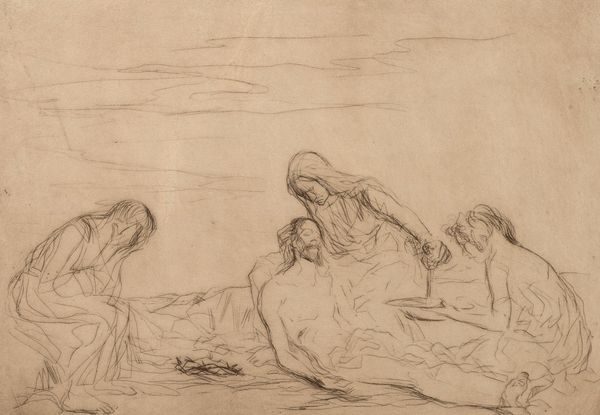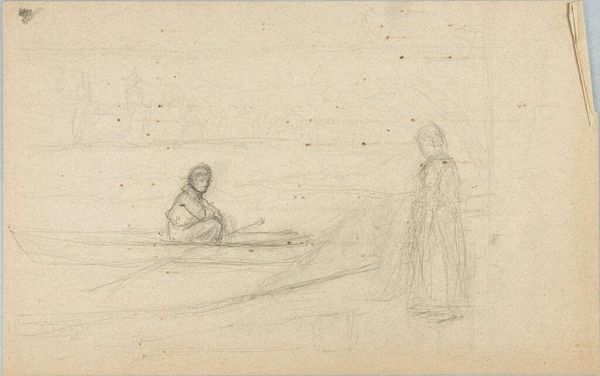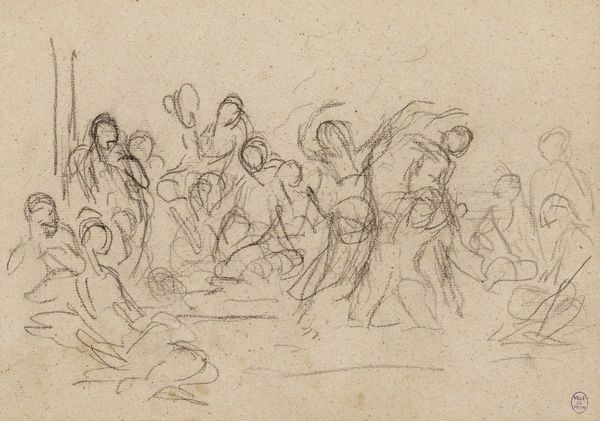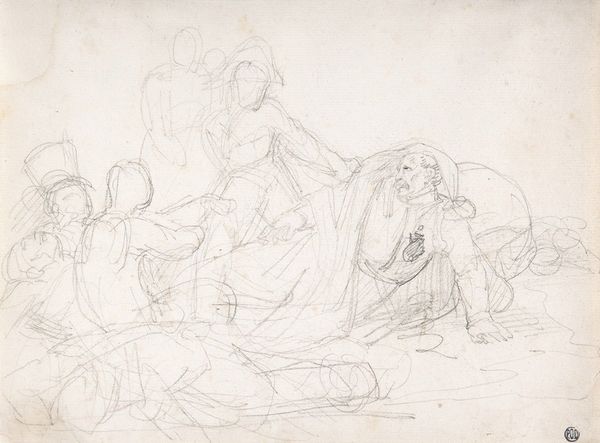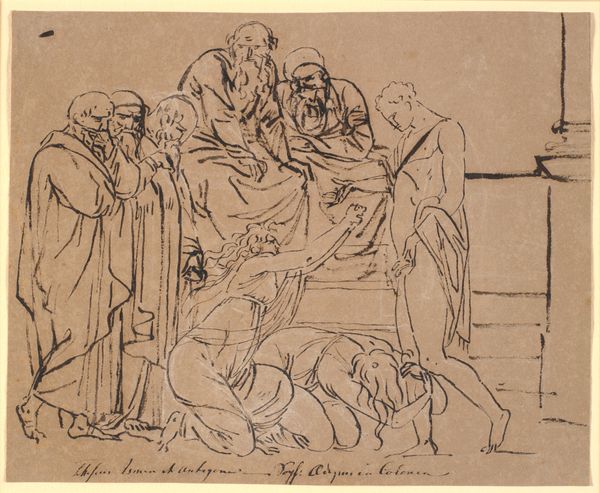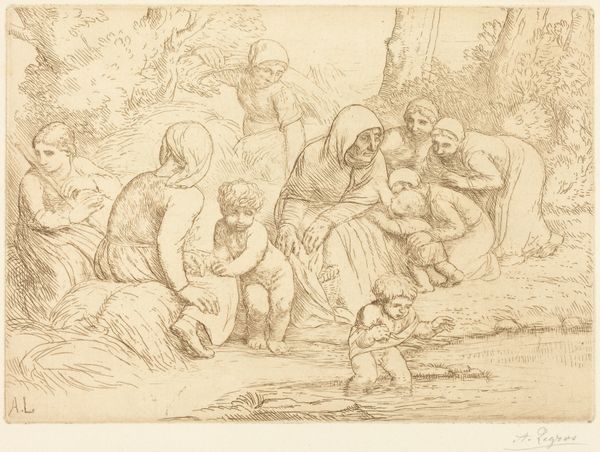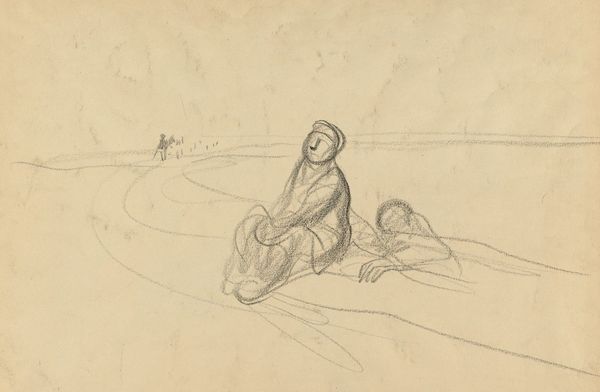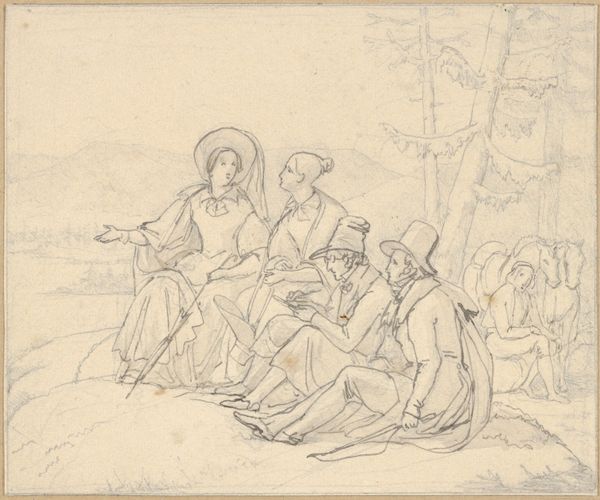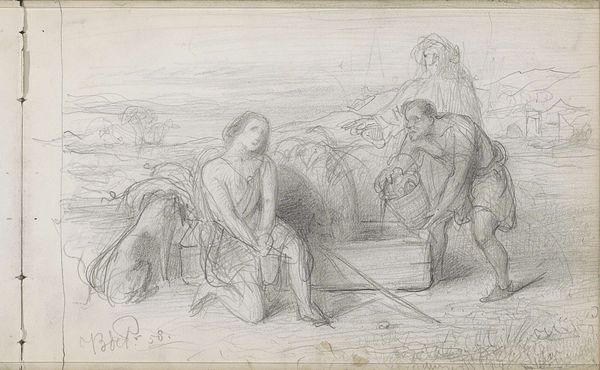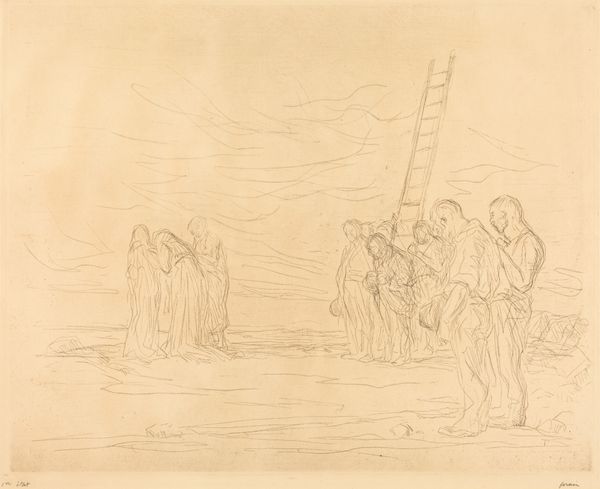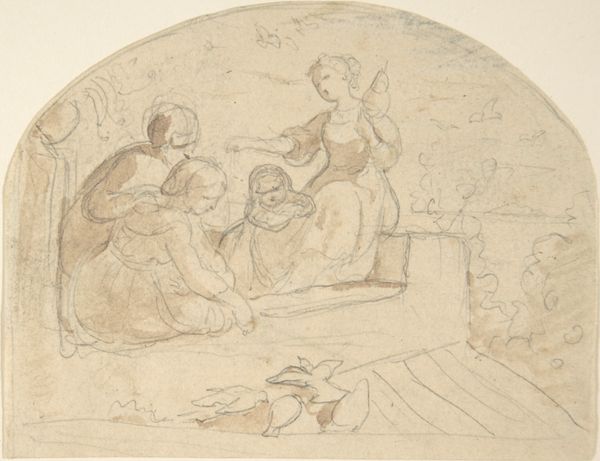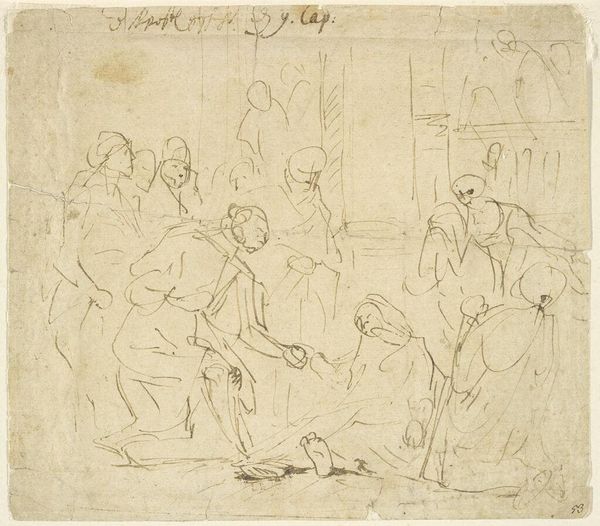
Copyright: Public Domain: Artvee
Curator: The starkness is what grabs me. There’s an immediate sense of solemnity in George Romney's ink drawing on paper, titled “Mourning Figures,” which he created sometime between 1773 and 1775. Editor: Yes, it's deeply sorrowful, isn't it? The grief is palpable, even with such simple lines. The figures are draped, anonymous almost, in their mourning. You sense a collective weight, but also isolation in their individual poses. Curator: Romney, in his exploration of history painting, was deeply invested in representations of emotion for public edification. In the 18th century, representations of history were often didactic opportunities for engendering virtue and empathy. I am reminded that paintings and prints had a distinctly public role as vehicles for circulating particular sentiments among society’s elite. Editor: Absolutely, and thinking about the power structures embedded in viewing this work, one wonders about the access to grief itself. Are these figures afforded societal permission to publicly express their sorrow? Is their pain legitimized within their own communities, and does the artist have a perspective in that power dynamic? Curator: The sparseness is what emphasizes the emotional depth, wouldn’t you agree? There isn't a lot of extraneous detail, it seems stripped back to its most essential. Look at the angles of the bodies—the slump of the shoulders and downturned heads, all telling a similar tale. The bare background further serves to intensify this emotional impact, really pulling attention to these figures and their postures. Editor: True, the focus allows for close examination, but I still want to look critically. What specific historical context informs this representation of mourning? What visual cues point towards a possible cultural origin of the figures and does the romantic lens introduce its own biases, changing our perception of their displayed bereavement? Curator: It’s a fascinating reminder that historical images don’t appear in a vacuum, that’s certain. We inevitably impose a bit of ourselves and the times we live in when looking back, isn't that the magic of witnessing history through art? Editor: It’s where art starts to become a mirror reflecting both the subject and the spectator and in a society facing an unrelenting surge of historical narratives, maybe "Mourning Figures" is a call for collective remembrance.
Comments
No comments
Be the first to comment and join the conversation on the ultimate creative platform.
